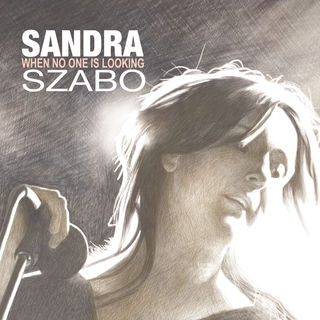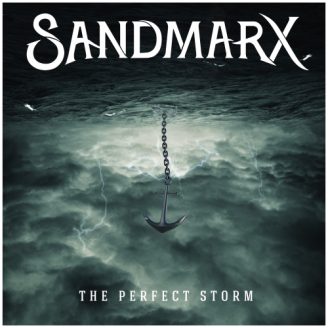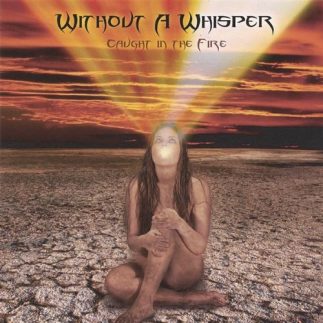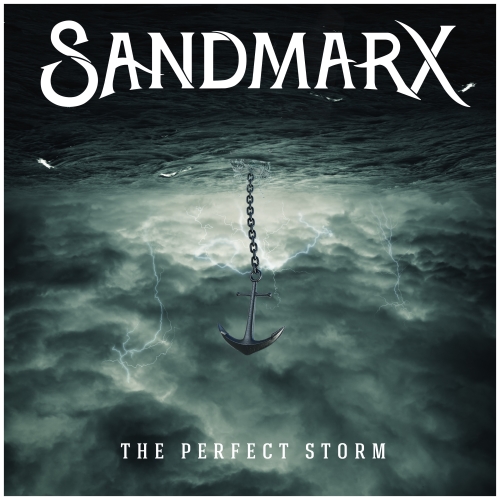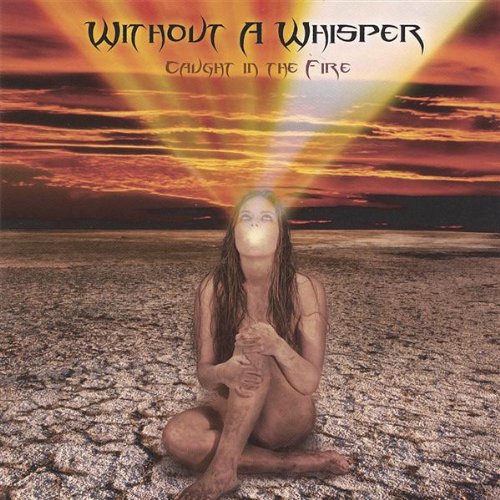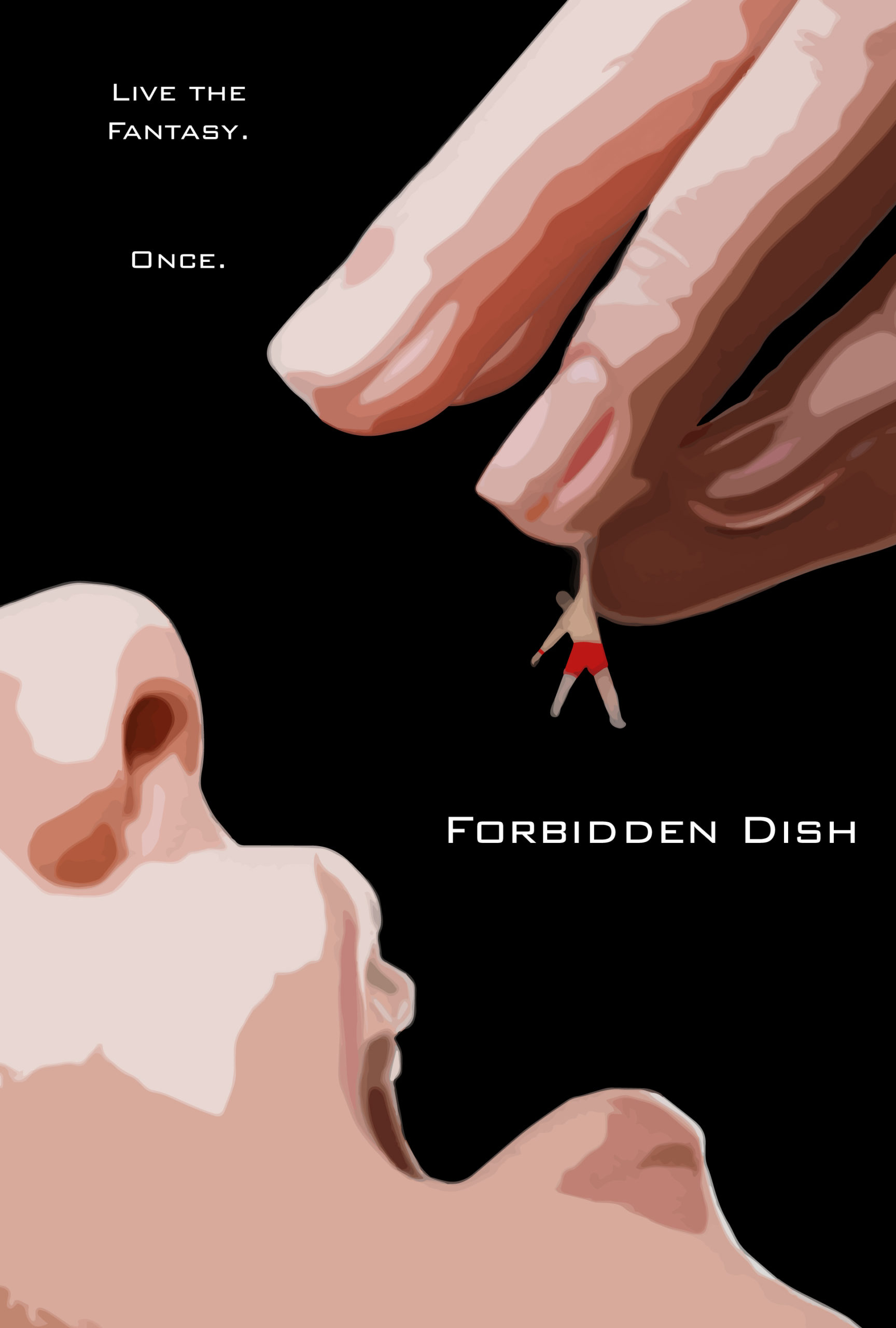
Logline:
“A waitress attempts to save her friend from a restaurant where shrunken men are voluntarily consumed by beautiful women.”
Synopsis:
The Forbidden Dish is a one-of-a-kind restaurant that caters to unique tastes and dark desires by allowing male customers to be miniaturized to just under one inch and consumed whole by members of the opposite sex. While all volunteer willingly, no backing out is allowed once the contracts are signed and the miniaturization process is complete. Danielle, a beautiful and intelligent employee of The Forbidden Dish, enjoys her job but refuses to participate in the process of serving or consuming so-called “unwilling” customers. However, when Quinn – her lovesick best friend – haphazardly allows himself to be shrunken, Danielle is forced to make ethical decisions that could compromise everything she stands for – all while avoiding the restaurant’s malevolent owner, Meghyn Blackwood.
The GoFundMe is now live!
Head to the GoFundMe page for more information and to support the film!
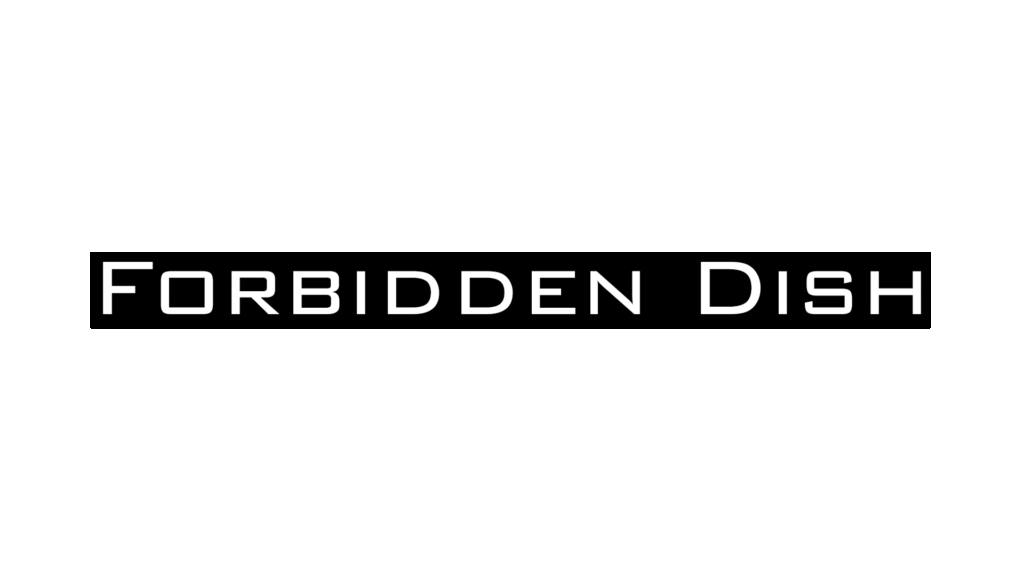
Poster Design

Forbidden Dish
Logline:
“A waitress attempts to save her friend from a restaurant where shrunken men are voluntarily consumed by beautiful women.”
Synopsis:
The Forbidden Dish is a one-of-a-kind restaurant that caters to unique tastes and dark desires by allowing male customers to be miniaturized to just under one inch and consumed whole by members of the opposite sex. While all volunteer willingly, no backing out is allowed once the contracts are signed and the miniaturization process is complete. Danielle, a beautiful and intelligent employee of The Forbidden Dish, enjoys her job but refuses to participate in the process of serving or consuming so-called “unwilling” customers. However, when Quinn – her lovesick best friend – haphazardly allows himself to be shrunken, Danielle is forced to make ethical decisions that could compromise everything she stands for – all while avoiding the restaurant’s malevolent owner, Meghyn Blackwood.
Why this movie
Given the time and resources that go into making any film, it’s always worth asking the question of the driving forces behind the production and why this particular movie needs to exist. Below, I hope to give insight into why this film is both so important to me personally and why I feel it’s a story worth telling.
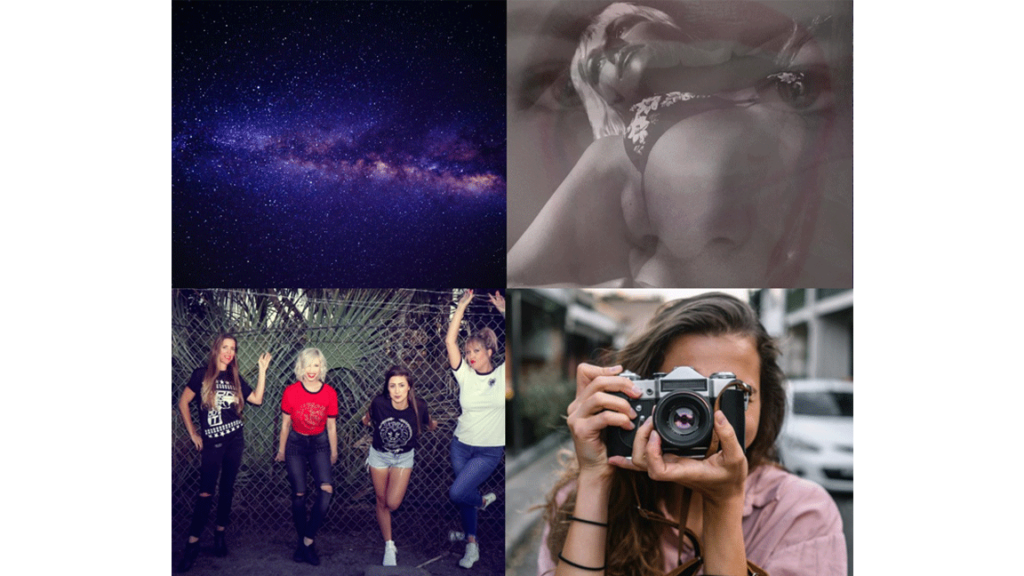

Click each category for more information
- Original Concepts
- Communities
- Female Empowerment
- Passion
Many of the best films of all time have been about subject matter that was outside the norm and unfamiliar to the public. “Star Wars” is a great example of a film that was full of oddball concepts and out-there ideas – spending the first fifteen minutes of the film with talking robots, mystical space wizards, a man-shaped bear as a co-pilot, and giant moon-sized superweapons just to name a few. With the benefit of hindsight, it is easy to forget just how off-the-wall and unexpected these concepts were to the movie-going public of 1977. That said, I would argue that the strange nature of the world explored in the film was precisely what intrigued audiences. The public is hungry for new ideas – concepts and characters that are not just re-packaged re-makes of things they’ve seen a thousand times before. Forbidden Dish aims to draw the viewer into a unique world unlike what they have seen before. It wants to challenge the audience to confront the moral and ethical decisions we face in our daily lives through the lens of the fantastic.
This film is also being made to support the specific communities on which its premise is based - Macro/Microphilia (attraction to people and/or creatures that are either of a much larger or smaller size than normal) and Vorarephilia (a fetish involving the desire to be consumed by, or to personally consume, another person or creature). Not only do people with these interests rarely (if ever) have a chance to see themselves or their desires in any sort of mainstream medium, it's not uncommon in many fetish communities that the individuals involved can find themselves feeling alone or outcast. This can become a particular problem when it comes to their romantic relationships: Do they risk telling their significant other about an important side of themselves, or suffer in silence for fear that the odd and unknown (to the general public) nature of their fantasies might drive a wedge between them?
Too often the latter path is chosen and these individuals keep a part of themselves locked away from those that matter most. It is my pure and honest desire that this film be helpful in acquainting this niche fantasy to a larger audience (not to convince them of its greatness, mind you, but just of its existence) and that in doing so it may assist those with these fantasies in introducing and sharing this part of themselves with their partners.
Another important aspect of this film, and something that has been an ingrained part of this project since its beginning, is its strong focus on impactful female characters. Too often in much of film history (and in truth, the history of all media) women have been relegated to prizes to won or woo’d, or to side characters with little impact or interest in the story. It was important to me to showcase a story in which women take not only center stage, but make up a majority of the cast. A film in which the moral complexity and sexuality of women were not set aside, but explored and allowed to be expressed. Women are as vast and varied as any other group on the planet and have too often been left to media that doesn’t reflect this reality.
In addition, it is this same desire for more female representation on screen that has also led me to attempt much the same goal behind the camera – female songwriters and vocalists showcased in the soundtrack, female artists and crew members in many of the on-set positions, and hopefully even a female composer. I would love for this film to be a beacon of female equality and empowerment within an industry and medium that has long acted otherwise.
Finally, I wanted to make a film that I was passionate about. A story that truly compelled me to make it. When I first stumbled across the series of Forbidden Dish short stories online, I was immediately drawn in by the engaging plotlines, the layered characters, and the rich world that they inhabited. It soon became apparent that these stories were something special - something that needed to be given a larger audience. Over the course of the next few years, I came to my decision – to be the change you want to see in the world. I realized that if I thought that these characters and this world could connect to people, and that it could be something special, then it was up to me to make it so.
It is for those reasons - a unique and different story, empowering a community of people to embrace and share who they are with the ones that love them, telling a story that puts women center stage both in front and behind the camera, and sharing a deep and compelling world – as well as many others that I decided to dedicate the next few years to bringing this film to life. That is “Why this Movie.”

There are three principal phases to film production. Click each phase for more information on the current timeline:
- Pre-Production
- Production
- Post-Production
Pre-production is typically the longest and most detail-intensive phase of the filmmaking process. It encompasses everything from the initial idea, securing any necessary rights, writing and re-writing the script, creating storyboards and an animatic, planning out a thorough schedule, drafting a detailed and specific budget that encompasses all facets of production (Pre-pro, pro, and post), creating materials (such as a website, preliminary art, and a variety of documents), scouting locations for use in the film (both private and studio space for green screen work), finding the required cast and crew, incorporating the formal LLC which will serve as the governing body of the film, and (last but not least) raising the necessary funds to move the project forward. This phase is currently ongoing (full time) and has been since January 2017.
The next phase is Production. While the final schedule will rely on a variety of factors (cast/crew availability, location availability, funding acquisition), the current plan is for production (aka. the actual shooting of the film) to take place during mid-to-late 2022. The goal is to have one full week of pre-production prep (cast reads and rehearsals, equipment gathering and practice, the sorting of props and set dressings, ) followed by a full 50-day shooting schedule – 12 ½ consecutive weeks of 12 hour days with 3-day weekends. Such a schedule should allow ample re-charge time for cast and crew (as opposed to a more aggressive 5-day work week) and ensure the best possible performance both in front and behind the camera. *One additional benefit: the fact that the film takes place primarily indoors, and also does not specify a time of year, means that there is no story reason why the production start date cannot be accelerated or pushed back if necessary.
The Production phase will be followed by the final phase – Post-Production, a term which encompasses (but is not limited to): Sorting Footage, Editing, Sound Effects, Scoring, Special Effects, Sound Mixing, Color Correction, and titles/credits. The goal is for this phase to take no longer than 6 months, but the timetable can be expanded to ensure that things are completed properly. One large advantage of Post-Production is that, unlike Production, it does not require a sizable full-time Most of the work in this phase will be split between myself and a select few (a digital special effects artist, a sound mixer, a colorist, etc.). It is in this phase when the hard work of all the others finally culminates in a finished film.
Pre-production is typically the longest and most detail-intensive phase of the filmmaking process. It encompasses everything from the initial idea, securing any necessary rights, writing and re-writing the script, creating storyboards and an animatic, planning out a thorough schedule, drafting a detailed and specific budget that encompasses all facets of production (Pre-pro, pro, and post), creating materials (such as a website, preliminary art, and a variety of documents), scouting locations for use in the film (both private and studio space for green screen work), finding the required cast and crew, incorporating the formal LLC which will serve as the governing body of the film, and (last but not least) raising the necessary funds to move the project forward. This phase is currently ongoing (full time) and has been since January 2017.
The next phase is Production. While the final schedule will rely on a variety of factors (cast/crew availability, location availability, funding acquisition), the current plan is for production (aka. the actual shooting of the film) to take place during the next year. The goal is to have one full week of pre-production prep (cast reads and rehearsals, equipment gathering and practice, the sorting of props and set dressings, ) followed by a full 50-day shooting schedule – 12 ½ consecutive weeks of 12 hour days with 3-day weekends. Such a schedule should allow ample re-charge time for cast and crew (as opposed to a more aggressive 5-day work week) and ensure the best possible performance both in front and behind the camera. *One additional benefit: the fact that the film takes place primarily indoors, and also does not specify a time of year, means that there is no story reason why the production start date cannot be accelerated or pushed back if necessary.
The Production phase will be followed by the final phase – Post-Production, a term which encompasses (but is not limited to): Sorting Footage, Editing, Sound Effects, Scoring, Special Effects, Sound Mixing, Color Correction, and titles/credits. The goal is for this phase to take no longer than 6 months, but the timetable can be expanded to ensure that things are completed properly. One large advantage of Post-Production is that, unlike Production, it does not require a sizable full-time Most of the work in this phase will be split between myself and a select few (a digital special effects artist, a sound mixer, a colorist, etc.). It is in this phase when the hard work of all the others finally culminates in a finished film.
There are three principal phases to film production:
- Pre-Production – Pre-production is typically the longest and most detail-intensive phase of the filmmaking process. It encompasses everything from the initial idea, securing any necessary rights, writing and re-writing the script, creating storyboards and an animatic, planning out a thorough schedule, drafting a detailed and specific budget that encompasses all facets of production (Pre-pro, pro, and post), creating materials (such as a website, preliminary art, and a variety of documents), scouting locations for use in the film (both private and studio space for green screen work), finding the required cast and crew, incorporating the formal LLC which will serve as the governing body of the film, and (last but not least) raising the necessary funds to move the project forward. This phase is currently ongoing (full time) and has been since January 2017.
- Production – The next phase is Production. While the final schedule will rely on a variety of factors (cast/crew availability, location availability, funding acquisition), the current plan is for production (aka. the actual shooting of the film) to take place during mid-to-late 2022. The goal is to have one full week of pre-production prep (cast reads and rehearsals, equipment gathering and practice, the sorting of props and set dressings, ) followed by a full 50-day shooting schedule – 12 ½ consecutive weeks of 12 hour days with 3-day weekends. Such a schedule should allow ample re-charge time for cast and crew (as opposed to a more aggressive 5-day work week) and ensure the best possible performance both in front and behind the camera. *One additional benefit: the fact that the film takes place primarily indoors, and also does not specify a time of year, means that there is no story reason why the production start date cannot be accelerated or pushed back if necessary.
- Post Production – The Production phase will be followed by the final phase – Post-Production, a term which encompasses (but is not limited to): Sorting Footage, Editing, Sound Effects, Scoring, Special Effects, Sound Mixing, Color Correction, and titles/credits. The goal is for this phase to take no longer than 6 months, but the timetable can be expanded to ensure that things are completed properly. One large advantage of Post-Production is that, unlike Production, it does not require a sizable full-time Most of the work in this phase will be split between myself and a select few (a digital special effects artist, a sound mixer, a colorist, etc.). It is in this phase when the hard work of all the others finally culminates in a finished film.

The proposed budget for the film is $500,000. This number was arrived at by calculating in every facet of production. This includes (but is certainly not limited to): paying all crew and cast an equal flat rate per day (a day in this case consisting of 12 hours) which accounts for the cost of overtime, purchasing all necessary equipment (Camera, lighting, sound, etc.), providing 1 meal per day to all cast and crew as well as assorted snacks and hydration throughout the day, covering all necessary legal costs that go along with a production (Attorney Fees, Workman’s Comp, General Liability, Location Coverage, Error and Omissions, etc.), paying all necessary non-full time cast and crew (drone operator, stunt coordinator, extras), paying for use of certain locations, funds to buy or build all necessary props, clothing, and set dressings, paying royalties for the use of all pre-existing music within the film as well as for the creation of an original score, compensation for all special effects work, color grading, and sound mixing, funds for producing necessary marketing materials (such as posters, t-shirts, etc.), and funding to take the film to a variety of festivals across the circuit.
The proposed budget for the film is $500,000. This number was arrived at by calculating in every facet of production. This includes (but is certainly not limited to): paying all crew and cast an equal flat rate per day (a day in this case consisting of 12 hours) which accounts for the cost of overtime, purchasing all necessary equipment (Camera, lighting, sound, etc.), providing 1 meal per day to all cast and crew as well as assorted snacks and hydration throughout the day, covering all necessary legal costs that go along with a production (Attorney Fees, Workman’s Comp, General Liability, Location Coverage, Error and Omissions, etc.), paying all necessary non-full time cast and crew (drone operator, stunt coordinator, extras), paying for use of certain locations, funds to buy or build all necessary props, clothing, and set dressings, paying royalties for the use of all pre-existing music within the film as well as for the creation of an original score, compensation for all special effects work, color grading, and sound mixing, funds for producing necessary marketing materials (such as posters, t-shirts, etc.), and funding to take the film to a variety of festivals across the circuit.
Below, you will find a basic breakdown of the major categories for which funding will be used. While not a line-by-line itemization, it should help to give a good idea of how the money will be distributed across the production. Click each line item for more information.
As expected, this number accounts for the cost of primary cast members. The current structure is a flat-rate daily pay scale which is uniform for all cast members based on their days-worked. As mentioned above, this number accounts for the daily overtime associated with 12-hour workdays.
Much like the cast, all crew positions would pay at the same flat-rate, daily pay scale. However, unlike the cast which does not see every member working during each day of production, the crew will be on set all-day, every-day. This fact is reflected in the considerably larger portion of the budget occupied by their percentage. That said, the crew is slated to be as small and effective as possible while not placing an undue burden on any one individual.
As this film takes place at a popular (and thus well-attended) restaurant and club, it should come as no surprise that a good deal of talented extras will be required to flesh out the world. Extras will be paid at the same flat-rate, daily pay scale as primary cast and crew (in order to encourage turnout and promote fairness). As the sheer scale of required extras results in not only increased direct cost but a larger food requirement, every effort has been made to minimize and consolidate days on which extras are required.
Just as an army crawls on its stomach, so too does a film set. As such, the full assortment of cast, crew, and extras (if present) will be provided with one (1) meal per shooting and prep day. Additionally, a small assortment of snacks and drinks will be available at the craft service table throughout the day (so that no one goes hungry or gets dehydrated).
Given the importance of specific locations to this film (an upscale dining room, a pumping club, and a green screen studio capable of wire-work, to name a few) it is imperative to have funding set aside to pay for the rental and use of such space. Studio space, in particular, can prove to be especially costly, given its express purpose for such use. Again, as with extras, every effort has been made to consolidate the days required in such an environment.
Unsurprisingly, the cost of all the necessary equipment can be rather high. While the film plans to reduce costs by shooting on a high-end consumer camera (the Sony AS7iii), there is still a great deal of equipment needed for even a modest setup. This includes (but is certainly not limited to): the camera, an assortment of lenses, the tripod, an external monitor, miniature crane arm, Steadicam, dolly track, microphone, boom pole, sound mixer, digital storage, batteries, a variety of lights, colored gels, cases and storage, and so much more. The equipment is no less than the very tools necessary to record the performance of the actors and the world of the story.
Each and every outfit or item seen on-screen will need to be purchased or acquired. Luckily, while there are a few large and important exceptions (the “Re-Sizing Chamber” and its accompanying control panel), only a limited number of custom props will need to be made – mainly those used in and around the Forbidden Dish restaurant and its branding. In terms of wardrobe, a large number of custom made Forbidden Dish uniforms (tops) will need to be made for the female cast. However, as much of the film sees them wearing the same outfits (both as a result of the uniforms and the small number of “story days”), this results in reducing the need for an expansive wardrobe. Finally, as much of the film’s practical effects work is limited to a handful of pivotal scenes, costs in this area can be kept lower than expected.
The post-production costs cover a wide variety of subjects such as: the creation of the film’s score, the licensing of any additional music or songs, buying the necessary hardware and software for both editing and rendering the finished film, media storage and backups, paying for the time and talent of digital effects artists to bring to life those aspects that cannot be shot practically, paying to have the film’s sound professionally mixed, and having the film properly and professionally color graded (a big a part of achieving the “cinematic look”).
This category covers a variety of costs that do not neatly fall into any of the others. For one, it includes paying for all of the necessary forms of insurance (Liability, Location, Errors and Omissions, etc.) required to make a movie. It also accounts for the cost of attorney fees accrued over the entire course of production (including but not limited to: drafting a variety of contracts [from those used with cast and crew, to those involving music rights acquisition], navigating the filing required for the creation of the LLC, and overall ensuring that this production adheres to all federal and state laws). This broad section also covers the cost of festival entrance fees and travel, office supplies, paying for the payroll company who will handle the distribution of funds to employees, and a set-aside contingency for cost overrun.
Like every other aspect of life, making a movie is subject to a variety of taxes. These include things such as FICA (Social Security), FICA (Medicare), FUTA (Federal Unemployment), SUI-NC (State Unemployment), and WC (Workman’s Compensation). As such, unavoidably, a certain amount of the budget goes to the US government.

Sandra Szabo
Also known as TheRocketQueen90 on Youtube, where she regularly posts acoustic covers of rock songs along with original music, she is a Norwegian-Hungarian singer-songwriter, with a rock n’ roll soul!
Being born and raised in Norway in the 90’s, she was introduced to music early in life as both of her parents were travelling musicians before settling down. As a young girl she played several instruments (such as guitar, drums, keyboard) before realizing that “I could express myself with my voice in ways I couldn’t before.” She has since studied at UC Berkeley in California, as well as BIMM (British and Irish Modern Music Institute) in Brighton UK.
Along with Marcus Greenway, himself a wonderfully talented musician who serves as guitarist and producer on all of Sandra’s albums released under her own name, and Kev Hickman, she has just released a new album, “I Sold My Soul to Rock n’ Roll,” that will rock your socks off! All songs are available on YouTube, Spotify, and all other platforms where music is played. To find out more, visit her website!
Sandmarx
Sandmarx is a modern hard rock band, formed in Norway in the fall of 2009 by vocalist / keyboardist Sandra Szabo and guitarist Marcus Greenway only a year after Marcus started learning guitar because he admired Sandra and her music. They decided to start a band, and moved from east to the west, to the city of Bergen.
The music is mostly inspired by hard rock bands like Guns N’ Roses, Avenged Sevenfold, Shinedown, Halestorm, Foo Fighters and more. For more information, visit Sandra’s website!
“The voice of Sandra Szabo is like an angel's kissed by the devil.”
- Der Spiegel
Without a Whisper
Without a Whisper was a female fronted, dark-edged power group that operated out of Arkansas in the mid-2000s. Led by the powerful vocals of Pamela Tegtmeyer (then Thompson) and the masterful guitar playing of Aaron Straub, the band opened for many national acts and released one (self-produced) album before eventually dissolving. Despite their limited run, the songs contained on that one album are incredible and indicate a talent and promise of success that far exceeds their eventual fate. The music itself is strong female-fronted rock, full of fire and emotion, in the vain of Halestorm or The Pretty Reckless. Their one and only album, Caught in the Fire, can be purchased either on Amazon or through CDBaby.
Nowadays, Aaron can be found making music alongside pianist Patti Unruh in his new band, Rhythm of Mars. To find out more, visit their website. Likewise, Pamela is the founder and lead singer for the band Eye for a Lie. Check out their music at ReverbNation!
Pamela Tegtmeyer- Vocals / Aaron Straub- Guitar / John Burnett- Bass / Tyler Wright- Drums
Sandra Szabo
Also known as TheRocketQueen90 on Youtube, where she regularly posts acoustic covers of rock songs along with original music, she is a Norwegian-Hungarian singer-songwriter, with a rock n’ roll soul!
Being born and raised in Norway in the 90’s, she was introduced to music early in life as both of her parents were travelling musicians before settling down. As a young girl she played several instruments (such as guitar, drums, keyboard) before realizing that “I could express myself with my voice in ways I couldn’t before.” She has since studied at UC Berkeley in California, as well as BIMM (British and Irish Modern Music Institute) in Brighton UK.
Along with Marcus Greenway, himself a wonderfully talented musician who serves as guitarist and producer on all of Sandra’s albums released under her own name, and Kev Hickman, she has just released a new album, “I Sold My Soul to Rock n’ Roll,” that will rock your socks off! All songs are available on YouTube, Spotify, and all other platforms where music is played. To find out more, visit her website!
Sandmarx
Sandmarx is a modern hard rock band, formed in Norway in the fall of 2009 by vocalist / keyboardist Sandra Szabo and guitarist Marcus Greenway only a year after Marcus started learning guitar because he admired Sandra and her music. They decided to start a band, and moved from east to the west, to the city of Bergen.
The music is mostly inspired by hard rock bands like Guns N’ Roses, Avenged Sevenfold, Shinedown, Halestorm, Foo Fighters and more. For more information, visit Sandra’s website!
“The voice of Sandra Szabo is like an angel's kissed by the devil.”
- Der Spiegel
Without a Whisper
Without a Whisper was a female fronted, dark-edged power group that operated out of Arkansas in the mid-2000s. Led by the powerful vocals of Pamela Tegtmeyer (then Thompson) and the masterful guitar playing of Aaron Straub, the band opened for many national acts and released one (self-produced) album before eventually dissolving. Despite their limited run, the songs contained on that one album are incredible and indicate a talent and promise of success that far exceeds their eventual fate. The music itself is strong female-fronted rock, full of fire and emotion, in the vain of Halestorm or The Pretty Reckless. Their one and only album, Caught in the Fire, can be purchased either on Amazon or through CDBaby.
Nowadays, Aaron can be found making music alongside pianist Patti Unruh in his new band, Rhythm of Mars. To find out more, visit their website. Likewise, Pamela is the founder and lead singer for the band Eye for a Lie. Check out their music at ReverbNation!
Pamela Tegtmeyer- Vocals / Aaron Straub- Guitar / John Burnett- Bass / Tyler Wright- Drums
More to come!
Check back for more information about the latest musical artists involved with Forbidden Dish!
About the Writer/Director
My name is Christopher McDonald. I graduated valedictorian of my high school and magna cum laude from Mercer University with a degree in Media Studies (formerly Communications and Theatre Arts) and a minor in Photography. I also attended a summer program dedicated to filmmaking at the North Carolina School of the Arts. More importantly than that though, I am a life-long fan of visual media. Not only was much of my childhood spent watching and re-watching a wide variety of films, but I also spent a great deal of it writing and filming an array of home movies. I was proud to show those films to anyone who would watch (usually family and friends), but I really made them because it was what I was meant to do. As a result, I always shared my dream of becoming a filmmaker with everyone around me. There was never a second choice, never a plan B – not because I dislike such caution (I am, in fact, notoriously cautious) but because there was nothing else I wanted more in my life.
As a result, after graduating from college, I already knew what I wanted to do – to write and direct my own film. That said, I was also acutely aware of the time and resources it would take to even begin that process. That’s why, in the summer of 2011, I began working on a government grant addressing underage drinking. It allowed me to not only continue to hone my creative skills (via work on television PSAs [Public Service Announcements], brochures, newspaper articles, posters, training and promotional videos, and various other forms of media communication with the public) while also learning new skills (accounting, state reporting, crafting research-based and result-driven papers, dealing with state and local government, and interacting with both the public and local media outlets). It also allowed me to save each and every dollar for the next stage of my life – working on this film.
Starting soon after my move to North Carolina, and based on a great deal of prep work back in Georgia, I began working on Forbidden Dish. Since then, I’ve spent the entirety of the past four years working solely on bringing this project to life: drafting legal documents and obtaining the rights to the short stories on which it is based, writing and re-writing the screenplay, digitally hand drawing over 6500 individual story boards, recording dialogue and using the storyboards to create a full-length animatic (an animated version of the movie meant to give an idea of the look and pacing of a film), using that animatic to create faux trailers for the film (meant to convey tone and story to both potential investors and crew), reaching out to talented musical artists regarding the use of their existing – and the creation of original – music for the film, building the website for the production company, breaking down each and every prop/item/location/piece of clothing/piece of equipment needed for the shoot, creating a detailed and realistic schedule for all 50+ days of production, and putting together a specific and (by movie standards) relatively low budget needed to bring this film to life.
Living off of my savings, and incurring a great many costs already, the creation of this film has been both my singular focus and full-time job since January 2017. No one knows their project as well as I do and no one has the drive to see it through like me. This is what I’m meant to do and nothing will prevent me from bringing this film to life.

We are currently taking on equity investors in the film. For more information on the costs and benefits of becoming an equity investor, please send an email to: chris@triplezerofilms.com
As a result of the subject matter and themes on display, as well as some of the language, there is no doubt that this film will be rated R. That said, I love R-rated films!
Absolutely not. While this is the first feature film to ever tackle this subject matter so directly, that is not its ONLY focus. First and foremost, the film is intended to be a thrill ride filled with fun characters and an exciting plot unlike anything seen on screen before! In addition to being a rip-roaring good time, the film also tackles a variety of themes relevant to our daily lives: Large Corporations and their power over us, Power Dynamics between the sexes, the modern Meat-for-Food Industry, Morality, Sexuality, and allusions to Classical Literature/timeless stories.
This is most definitely a real movie. In fact, as mentioned above, I have already spent the past four years (since January 2017) working FULL TIME on bringing this project to life. (Feel free to read over the “About the Writer/Director” section for a more detailed breakdown of just a portion of what that has entailed). I have put absolutely everything into making this best film I possibly can and hope that it can help launch the careers of the dozens of talented actors and crew necessary to bring it to life.
I sure hope so! The plan is absolutely to get the film up on the big screen (beyond mere festival attendance), but I am also not closing the door to any method of distribution.
Yes. 1000% yes. I am a HUGE supporter of physical media and firmly believe in an individual’s right to own a copy of the media they love. While it is impossible to give a timeline for such a release, rest assured it will come (even if I have to sell bootlegs out of the back of my car on New Year’s Eve under an overpass).
Good Question! While Kickstarter might have more ‘flash’ and is the typical home for many independent film projects, they also charge a fairly large platform fee out of the donations. Coupled with the standard processing fee, this can mean that as much as 10% of the total funds raised go to the site – meaning that I would need to raise at least 10% more money just to cover their costs! As GoFundMe has no site fee (besides the 2.7% processing and 30 cents per donation), almost ALL of the money raised goes straight to the project.
ALL money donated via GoFundMe will go directly to funding the film and filling out the budget. Like all of the film’s funds, it will be placed in a separate bank account under the name of the LLC and will remain there until production begins.
Not a dime. I’ve spent much of the last decade saving every dollar I could for the express purpose of being able to live off of it during the production of this film. While everyone else involved in this project will be paid in real-time for their work, I don’t see any return until the film begins making a profit and ALL investors are fully paid back (with interest).
While the film will also be funded by taking on investors, any funds raised via GoFundMe mean less stock in the film that needs to be sold (and thus less control that needs to be given up) and less of the eventual profit that needs to be paid back to investors (a big deal considering that, as mentioned, I see no compensation for all of my years of hard work and personal monetary investment until they are).
Needing fewer investors also means an expedited timeline for production, as the time that would have been spent securing them and handling paperwork – each of these a lengthy process – can instead be spent actually making the film. So, while reaching the full goal via GoFundMe (while it would be honestly astounding) is not absolutely required for the film to exist, each and every donation would be a HUGE help! (Seriously… I can’t overstate how much.)
While not to say that a ‘traditional’ crowdfunding campaign (with perks etc.) couldn’t happen sometime in the future, the GoFundMe campaign is merely for traditional donations. You see, much like the aforementioned Kickstarter fees, any perks given out by a campaign – be they DVDs, Posters, or otherwise – come straight out of the funds for the film. This means that, yet again, I would need to raise even more money that would still not go to the production (and would thus result in an even higher budget). That said, anyone who donates $50 or more to the GoFundMe campaign WILL be listed in the credits of the film.
We are currently taking on equity investors in the film. For more information on the costs and benefits of becoming an equity investor, please send an email to: chris@triplezerofilms.com
As a result of the subject matter and themes on display, as well as some of the language, there is no doubt that this film will be rated R. That said, I love R-rated films!
Absolutely not. While this is the first feature film to ever tackle this subject matter so directly, that is not its ONLY focus. First and foremost, the film is intended to be a thrill ride filled with fun characters and an exciting plot unlike anything seen on screen before! In addition to being a rip-roaring good time, the film also tackles a variety of themes relevant to our daily lives: Large Corporations and their power over us, Power Dynamics between the sexes, the modern Meat-for-Food Industry, Morality, Sexuality, and allusions to Classical Literature/timeless stories.
This is most definitely a real movie. In fact, as mentioned above, I have already spent the past seven years (since January 2017) working FULL TIME on bringing this project to life. (Feel free to read over the “About the Writer/Director” section for a more detailed breakdown of just a portion of what that has entailed). I have put absolutely everything into making this best film I possibly can and hope that it can help launch the careers of the dozens of talented actors and crew necessary to bring it to life.
I sure hope so! The plan is absolutely to get the film up on the big screen (beyond mere festival attendance), but I am also not closing the door to any method of distribution.
Yes. 1000% yes. I am a HUGE supporter of physical media and firmly believe in an individual’s right to own a copy of the media they love. While it is impossible to give a timeline for such a release, rest assured it will come (even if I have to sell bootlegs out of the back of my car on New Year’s Eve under an overpass).
Not a dime. I’ve spent much of the last decade saving every dollar I could for the express purpose of being able to live off of it during the production of this film. While everyone else involved in this project will be paid in real-time for their work, I don’t see any return until the film begins making a profit and ALL investors are fully paid back (with interest).
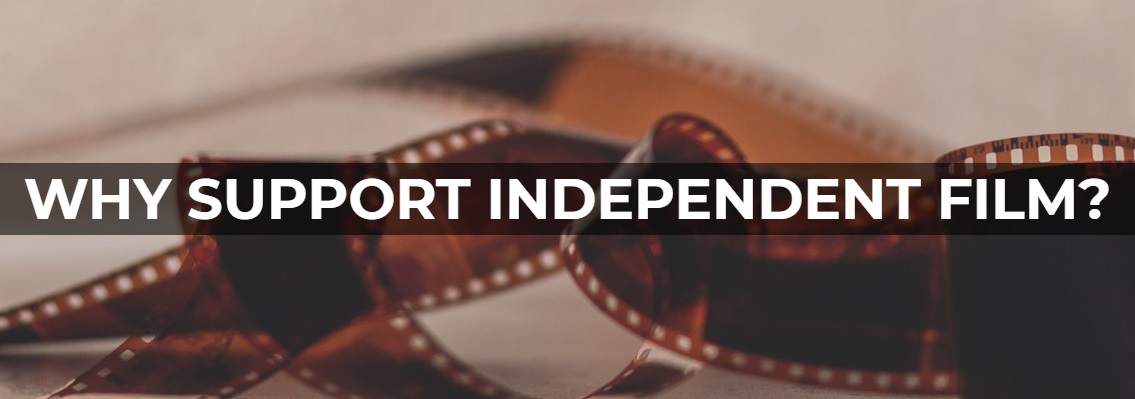
Film is a unique art form, encompassing (to some degree or another) every other artistic medium: photography, music, illustration, writing, acting, set design, and many more. It also typically requires a greater investment, both in terms of time and financial resources, than nearly any of those artistic peers. In exchange, however, film is able to transport the viewer to another world in a way more deeply personal and all-consuming than can be accomplished by nearly any other means. Characters and stories can reach out across decades, galaxies, and languages to make a meaningful connection with audiences all over the globe. People unborn at the time of production can marvel as they become engrossed in a tale conceived and completed before their own existence. Unlike more fleeting forms of storytelling such as Opera or theatre, a film performance lives in on perpetuity to be enjoyed by generations of film-goers. As the old saying goes, “Film is forever.”
However, one thing that separates film from many (but certainly not all) of its artistic contemporaries is the degree to which it has been enveloped by big business. Because of the high financial barrier to entry (one that has luckily fallen greatly over the past few decades thanks to technological advancement), large studios and mega-producers have come to dominate the landscape with 1, 2, and even 3 hundred million dollar blockbusters. These films are so large, and their costs so exorbitant, that they are not able to take any sort of meaningful risk – boilerplate templates are used across a variety of standardized concepts (superhero, sci-fi epic, over-the-top action, etc.), characters – necessary for the never-ending deluge of sequels and spin-offs – are never allowed to be in any real danger or end their stories with any sort of finality, and subverting audience expectations never goes farther than a cameo from a famous actor, teasing their involvement in a future installment.
Imagine a world where the same sort of by-the-numbers, risk-averse mentality applied to other forms art: if, because of the exorbitant cost of paint supplies and canvas, the only paintings produced with any regularity were celebrity portraits or action-scene still-life’s, a world where sculptures could only come in the form of cats, dogs, and beautiful women, or a world where the cost of writing was so high that the nearly half a million new books released on a yearly basis dwindled to a few hundred. Such a media landscape would be a barren and unpleasant place, devoid of the types of creative energy that spur the existence of eventual classics. While profiting from art is important for both the livelihood of the artists and the creation of more art, when the sole focus of an entire creative medium becomes the recoupment of funds and selling merchandise, it is inevitable that a form of artistic necrosis sets in.
As a result, originality is replaced with replicability – wondering how to copy and expand upon the success of existing material again and again. It is this mentality that has led to our current system of constant re-makes, re-boots, sequels, prequels, spin-offs, and knock-offs. Did the world need a nearly shot-for-shot remake of The Lion King? How many times, exactly, can dinosaurs escape a theme park? Are people yearning to know the history of how a single textbook in the Harry Potter universe was written? While it is true that, regardless of the answers to those questions, many of those films and franchises went on to make sizable returns at the box office, the public response to them has often been (particularly in the long-term) lukewarm. The films are seen and forgotten on the same weekend, not due to any sort of lack of quality within the production, but due to the de-facto requirement that they not break new ground. In a medium dedicated to telling stories, Hollywood has forgotten the foundation of their art form.
These factors, and many more, are the precise reason that independent film is so vital. By its very nature, operating outside the copy-paste world of filmmaking by committee, independent film is able and willing to tackle the types of unique and engaging subject matter that advance the medium. It is able to cater to more niche audiences and trust that the viewer is smart enough to follow along in more complex and challenging material. Most importantly, it is able to tell stories unlike what has been seen before – with more artistic freedom and smaller budgets, filmmakers are able to bring new and exciting worlds and characters to life in a manner impossible within the ridged studio system. Like most great artistic mediums, it allows the artist to create with the smallest possible gap between intention and reality. This fact, along with a great deal of talent and hard work, helped launch the careers of such notable filmmakers as Kevin Smith, Quinton Tarantino, George A. Romero, and John Carpenter.
But supporting independent film isn’t just about the writers or directors – making a film, ANY film, is the result of a collaboration between a variety of artists. From set designers to directors of photography, actors to electricians, composers to make-up artists – independent films help train and launch the careers of the next generation of industry professionals. Every set is teeming with talent just looking for a place to display itself, and you never know just who might make it big. Look no further than Kevin Bacon in the original Friday the 13th, or Jamie Lee Curtis in Halloween to find examples of stars who got their start in independent (and low-budget) film. Such opportunities not only aided the individuals in question, but also wound up (retroactively) benefiting the film due to their eventual stardom. Every artist needs an opportunity to show what they are capable of and supporting independent film is a wonderful way to encourage the careers of a multitude of individuals all at once.
Another less-lofty reason to support independent film is that they are not only a vital American art form, but watching them (and making them) is fun! And don’t we all need a bit more fun in our lives? 🙂

Links
Forbidden Dish is based on a series of short stories by a trio of talented authors. To read the original stories, or any of the author’s other work, click the links below.
